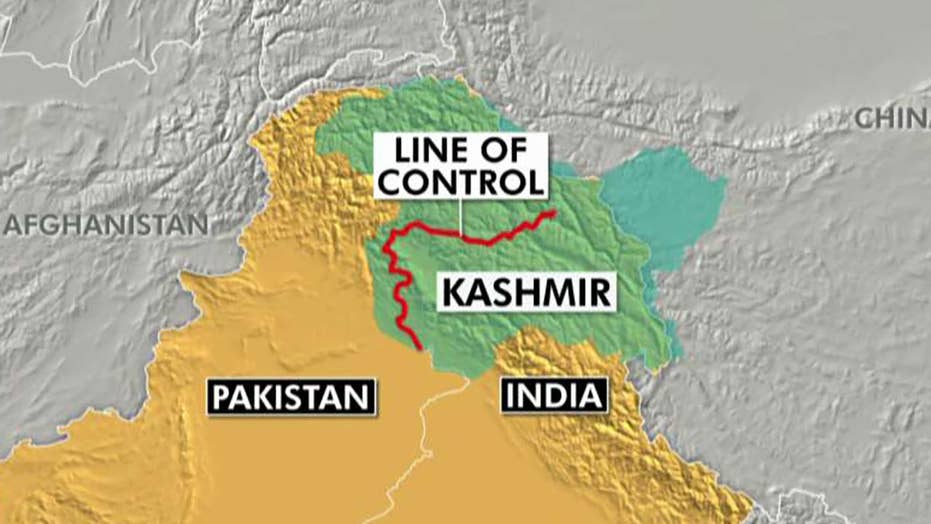India-Pakistan Relations: Understanding The Kashmir Dispute And The Potential For Conflict

Table of Contents
The Historical Roots of the Kashmir Dispute
The origins of the Kashmir dispute lie in the tumultuous partition of British India in 1947. The princely state of Jammu and Kashmir, ruled by Maharaja Hari Singh, enjoyed a degree of autonomy but was left undecided about its accession to either India or Pakistan. Following a tribal invasion from Pakistan-administered territories in October 1947, Maharaja Hari Singh acceded to India, a move that Pakistan vehemently contested. This triggered the First Kashmir War (1947-48), which resulted in a ceasefire and the establishment of the Line of Control (LOC), a de facto border that continues to divide the region to this day.
- The UN's Involvement: The United Nations Security Council intervened, passing several resolutions calling for a plebiscite to determine the will of the Kashmiri people. However, this plebiscite has never been held, leading to continued contention.
- The Simla Agreement (1972): This agreement between India and Pakistan aimed to improve bilateral relations and address the Kashmir issue, but it failed to achieve a lasting resolution, leaving the LOC as the primary dividing line.
- Rise of Militancy: The rise of various militant groups in the Kashmir region, fueled by differing political narratives and grievances, further complicated the situation and significantly impacted India-Pakistan relations, leading to numerous armed conflicts and border skirmishes. This has also contributed to the ongoing human rights concerns in the region.
The Current State of Affairs in Kashmir
The revocation of Article 370 of the Indian Constitution in 2019, which granted special autonomous status to Jammu and Kashmir, significantly altered the situation. This action was met with strong opposition from Pakistan and widespread international concern. The region remains under heavy military presence, raising persistent security concerns and leading to ongoing human rights issues.
- Differing Perspectives: India views the region as an integral part of its territory, while Pakistan claims a right to self-determination for the Kashmiri people and considers a significant portion of the region as Pakistan-administered Kashmir (PaK). This fundamental difference in perspective forms a major obstacle to any resolution.
- International Involvement: International actors and organizations, including the UN, have expressed concern over the human rights situation in Kashmir and have called for dialogue and a peaceful resolution to the dispute. However, their influence remains limited due to the complex geopolitical dynamics involved.
- Cross-Border Terrorism: The persistent threat of cross-border terrorism continues to be a major factor exacerbating the conflict, fueling mistrust and hindering any meaningful progress towards peace.
Potential Triggers for Future Conflict
Several factors could escalate tensions between India and Pakistan, potentially leading to another conflict. The volatile nature of the LOC, the role of non-state actors, and regional power dynamics all contribute to the risk.
- Military Activity along the LOC: Increased military activity along the LOC, including skirmishes or accidental exchanges of fire, could easily escalate into a larger conflict. This is particularly true given the presence of nuclear weapons on both sides.
- Terrorist Attacks: Terrorist attacks targeting either country, potentially blamed on groups operating from the other side of the border, could trigger immediate retaliatory action, leading to an escalation spiral.
- Escalation of Rhetoric and Propaganda: Inflammatory rhetoric and propaganda from both sides can raise tensions and make it more difficult to de-escalate situations. This often feeds into popular opinion and makes compromise more challenging.
- External Interference: External interference from regional or global powers could also exacerbate the situation, adding further complexity to an already difficult scenario. Competition for influence in the region can increase the risk of conflict.
Paths Towards Peaceful Resolution
Finding a peaceful resolution to the Kashmir dispute requires a multi-faceted approach focusing on dialogue, diplomacy, and confidence-building measures (CBMs).
- Reinstatement of Bilateral Dialogue: Re-establishing open communication channels between India and Pakistan is crucial. Direct dialogue, even if difficult, is essential for addressing concerns and finding common ground.
- Implementation of CBMs: Implementing CBMs, such as reducing military deployments along the LOC, improving communication mechanisms, and promoting people-to-people contact, can build trust and reduce the risk of accidental escalation.
- International Mediation: The involvement of neutral third-party mediators, with the consent of both India and Pakistan, can facilitate dialogue and help find mutually acceptable solutions.
- Economic Cooperation: Fostering economic cooperation can create incentives for peace and reduce reliance on conflict. Joint projects and economic interdependence can make conflict less appealing.
Conclusion
The Kashmir dispute remains a significant obstacle to peaceful India-Pakistan relations, posing a persistent threat to regional stability. Understanding the historical context, the current realities, and potential triggers for conflict is crucial. While the path towards a lasting resolution is complex and challenging, pursuing peaceful solutions through dialogue, diplomacy, and confidence-building measures is essential. Continued engagement with the issue of India-Pakistan relations, particularly regarding the Kashmir dispute, is paramount to preventing further escalation and fostering a more peaceful future for the region. We must continue to advocate for peaceful resolution and explore all avenues for de-escalation and lasting peace. Let’s work together to find a sustainable solution to the complex issue of India-Pakistan relations and move towards a more secure future for both nations.

Featured Posts
-
 Nc State Recruiting Blow Loss Of Running Back Kendrick Raphael
May 08, 2025
Nc State Recruiting Blow Loss Of Running Back Kendrick Raphael
May 08, 2025 -
 Gewinnzahlen Lotto 6aus49 12 April 2025 Ziehungsergebnis Ueberpruefen
May 08, 2025
Gewinnzahlen Lotto 6aus49 12 April 2025 Ziehungsergebnis Ueberpruefen
May 08, 2025 -
 Analyst Predicts Bitcoin Rally Key Chart Levels To Watch May 6th
May 08, 2025
Analyst Predicts Bitcoin Rally Key Chart Levels To Watch May 6th
May 08, 2025 -
 Urgent Dwp Sending Letters Benefits At Risk For Uk Households
May 08, 2025
Urgent Dwp Sending Letters Benefits At Risk For Uk Households
May 08, 2025 -
 Ethereum Price Forecast Is 2 700 The Next Target After Accumulation
May 08, 2025
Ethereum Price Forecast Is 2 700 The Next Target After Accumulation
May 08, 2025
